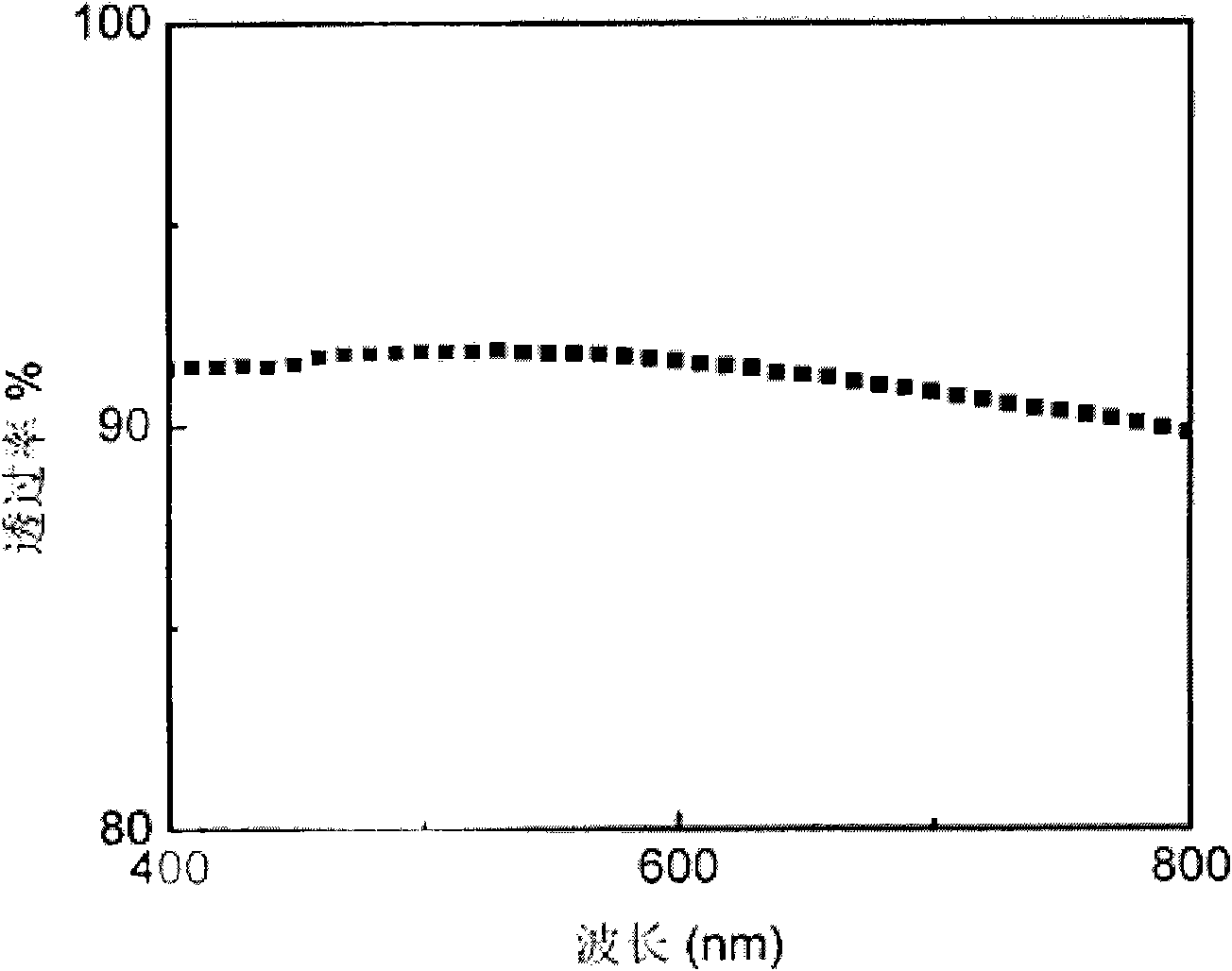Flexible substrate used in luminescent device and preparation method thereof
A technology for light-emitting devices and substrates, which is applied in the manufacture of semiconductor/solid-state devices, electric solid-state devices, semiconductor devices, etc., and can solve the problems of poor bonding force between carbon nanotubes and flexible substrates, and poor surface flatness of thin-layer carbon nanotubes. , to achieve high visible light transmittance, enhanced luminous intensity, and improved visible light transmittance
- Summary
- Abstract
- Description
- Claims
- Application Information
AI Technical Summary
Problems solved by technology
Method used
Image
Examples
Embodiment 1
[0074] Such as figure 1 As shown in the substrate structure, the flexible substrate 1 adopts a UV-curable silicone adhesive, and the UV-curable silicone adhesive includes 95% photosensitive polysiloxane, 2% photoinitiator and 3% diluted agent and auxiliary agent, the conductive layer 2 adopts carbon nanotubes, and the voids of the carbon nanotube layer are filled with inorganic luminescent nanoparticles, the size of the inorganic luminescent nanoparticles is 20 nanometers, and the thickness of the carbon nanotube layer is 80 nanometers.
[0075] The preparation method is as follows:
[0076] ① Clean the silicon substrate whose surface roughness is less than 1nm, and dry it with dry nitrogen after cleaning;
[0077] ② Disperse carbon nanotubes evenly in a solvent, and prepare a carbon nanotube layer on a clean silicon substrate by spin coating. The rotation speed of spin coating is 4000 rpm, the duration is 60 seconds, and the film thickness is about 80 nanometers;
[0078] ③...
Embodiment 2
[0083] Such as figure 1 As shown in the substrate structure, the flexible substrate 1 adopts a UV-curable silicone adhesive, and the UV-curable silicone adhesive includes 92% photosensitive polysiloxane, 5% photoinitiator and 3% diluted The conductive layer 2 adopts carbon nanotubes, and the voids of the carbon nanotube layer are filled with inorganic luminescent nanoparticles. The size of the inorganic luminescent nanoparticles is 15 nanometers, and the thickness of the carbon nanotube layer is 70 nanometers.
[0084] The preparation method is similar to Example 1.
Embodiment 3
[0086] Such as figure 1 As shown in the substrate structure, the flexible substrate 1 adopts UV-curable silicone adhesive, which includes 92% photosensitive polysiloxane, 2% photoinitiator and 6% diluted The conductive layer 2 adopts carbon nanotubes, and the voids of the carbon nanotube layer are filled with inorganic luminescent nanoparticles. The size of the inorganic luminescent nanoparticles is 10 nanometers, and the thickness of the carbon nanotube layer is 60 nanometers.
[0087] The preparation method is similar to Example 1.
PUM
| Property | Measurement | Unit |
|---|---|---|
| Size | aaaaa | aaaaa |
| Thickness | aaaaa | aaaaa |
| Surface roughness | aaaaa | aaaaa |
Abstract
Description
Claims
Application Information
 Login to View More
Login to View More - R&D
- Intellectual Property
- Life Sciences
- Materials
- Tech Scout
- Unparalleled Data Quality
- Higher Quality Content
- 60% Fewer Hallucinations
Browse by: Latest US Patents, China's latest patents, Technical Efficacy Thesaurus, Application Domain, Technology Topic, Popular Technical Reports.
© 2025 PatSnap. All rights reserved.Legal|Privacy policy|Modern Slavery Act Transparency Statement|Sitemap|About US| Contact US: help@patsnap.com



